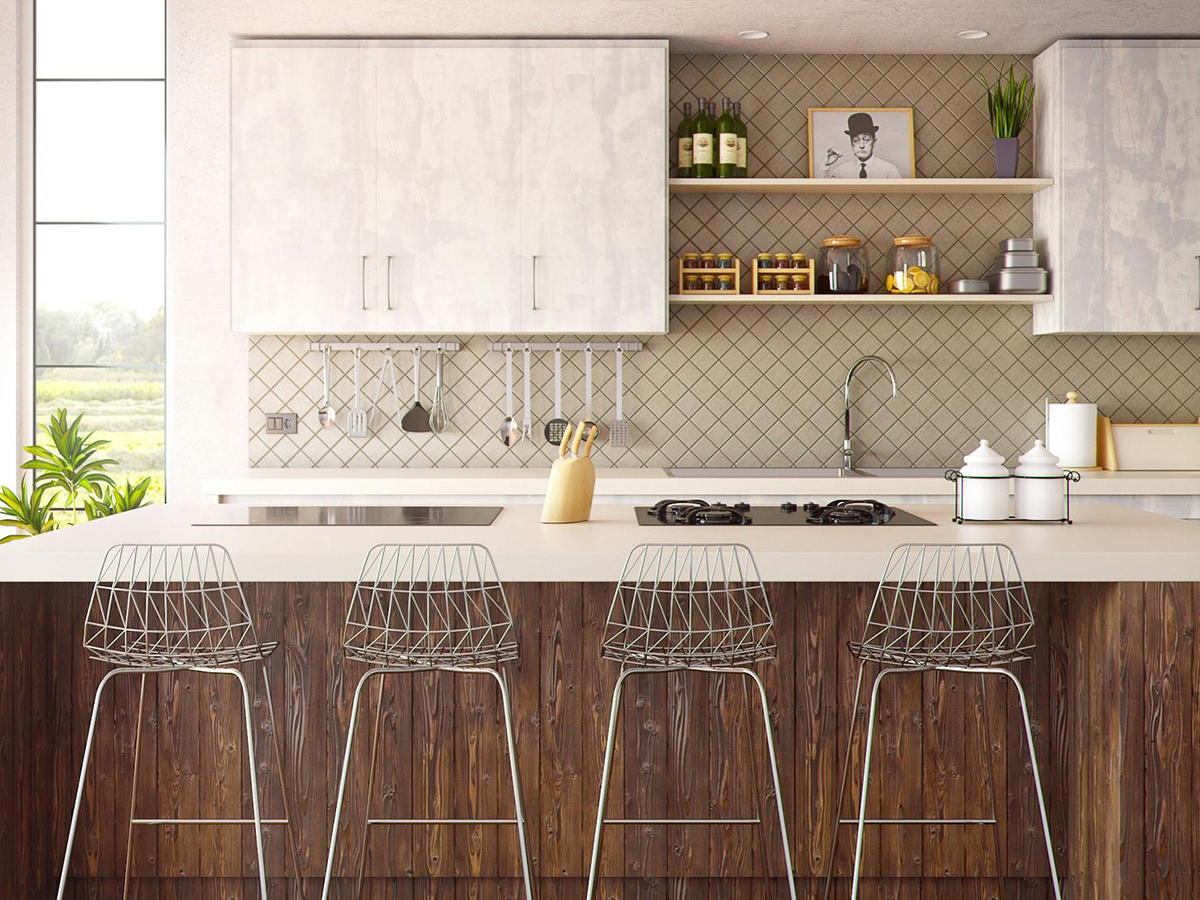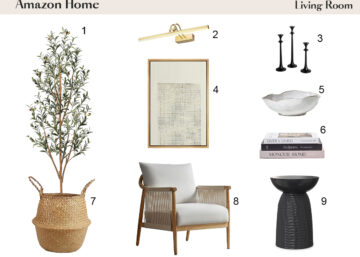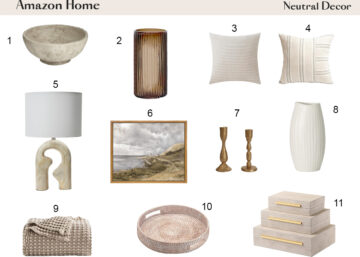Kitchen Design: Trends in Cabinets, Countertops, and Layouts
Evolution of Kitchen Design
The kitchen, often called the heart of the home, has undergone significant transformations over the years, adapting to changes in technology, societal norms, and aesthetic preferences. While many discussions focus on surface-level aesthetic changes, like color trends and appliance styles, it’s crucial to delve into the more profound shifts that have redefined this essential space, particularly in terms of spatial integration and multi-functionality.
Historical Context
Traditionally, kitchens were designed purely for functionality, isolated, and often relegated to the back of the home. This separation was partly practical—to contain cooking smells and messes—and partly cultural, reflecting the kitchen’s role as a service area not meant for socializing. Over the 20th century, as homes became more centered around family life and open-plan living gained traction, the kitchen began to move into the limelight. The integration of the kitchen with living and dining areas marked a pivotal shift, turning it into a hub of social and familial interaction.
Modern Influences
In recent decades, the rise of the “smart home” has further revolutionized kitchen design. However, a less frequently discussed aspect is how kitchens are adapting to the blurred boundaries between work and home life, especially post-pandemic. The modern kitchen now often incorporates features that facilitate remote work and study, such as built-in charging stations, discreet nooks for laptops, and enhanced soundproofing to accommodate video calls.
Another underexplored trend is the incorporation of biophilic design principles into kitchens. As people seek to strengthen their connection with nature within their living spaces, kitchen designs increasingly include elements like herb gardens integrated into window sills, materials that mimic natural textures, and skylights that increase natural lighting. These features not only enhance the aesthetics of the kitchen but also promote well-being by merging functionality with nature.
As we continue to redefine what a kitchen can be, the focus has shifted from creating a space that is merely functional to one that is an adaptable, multi-use environment. This evolution reflects broader changes in how we live and work, underscoring the kitchen’s role not just as a place for cooking, but as a central, multifaceted space in our homes and lives. These shifts in kitchen design are not just about keeping up with trends but adapting our spaces to fit new ways of living, which will continue to evolve in response to future technological advances and lifestyle changes.
Cabinet Innovations and Trends
The evolution of kitchen cabinets has been marked by both technological advancements and a shifting focus on personalization and sustainability. These changes are not just superficial; they reflect deeper societal shifts towards efficiency, environmental consciousness, and a desire for uniquely tailored spaces.
Materials and Finishes
Sustainable Materials
One of the most significant trends in kitchen cabinetry is the shift toward sustainable materials. As environmental awareness increases, more homeowners and designers are opting for cabinets made from recycled or rapidly renewable resources. Bamboo, for instance, has become popular due to its fast growth rate and durability. Additionally, reclaimed wood is prized not only for its environmental benefits but also for its aesthetic appeal, offering a piece of history and a unique look that cannot be duplicated in new materials.
High-Tech Finishes
The finishes on kitchen cabinets have also evolved. Beyond the typical paint and stain, cabinets today often feature high-tech finishes that resist bacteria and stains. These include nanotech materials—surfaces engineered at the molecular level to repel dirt and water, making them easier to clean. This technology not only enhances the functionality of kitchen cabinets but also extends their lifespan, which is a plus for both sustainability and cost efficiency.
Design and Functionality
Smart Storage Solutions
The internal design of kitchen cabinets has seen perhaps the most significant transformation. Modern cabinets are no longer just storage spaces but are designed with specific uses in mind, incorporating various organizational tools and technologies. For example, pull-out spice racks, built-in appliance garages, and custom utensil dividers are standard. More innovative solutions include hydraulic, easy-close doors that open and close with a touch—ideal for accessibility and a cleaner, more minimalist look.
Customizable Options
Customization has also become a key feature in contemporary cabinet design. With the rise of modular design philosophies, homeowners can now adapt their cabinetry to fit their changing needs. This could mean adjustable shelves that accommodate different storage needs or interchangeable door panels that allow homeowners to update their aesthetics without a complete overhaul. This trend towards customization not only caters to individual preferences but also reflects a broader move towards adaptive, long-term home design.
Impact on Aesthetics and Functionality
Cohesive Aesthetics
The design of kitchen cabinets significantly impacts the overall aesthetics of the space. Today’s trends favor a seamless look, with cabinets that blend into the walls or match the kitchen’s primary color palette. This cohesive aesthetic minimizes visual clutter and enhances the feeling of spaciousness—a crucial element in modern kitchen design.
Enhanced Functionality
Functionality remains paramount in cabinet design. Innovations like soft-close drawers, integrated lighting, and hidden outlets enhance usability and safety. The integration of smart technology, such as cabinets with built-in screens or voice-controlled features, reflects the kitchen’s evolution into a high-tech hub, suitable for a variety of activities beyond cooking.
Countertop Revolution
In contemporary kitchen design, countertops play a pivotal role not just in the kitchen’s functionality but also in defining its aesthetic. As one of the most visible and utilized surfaces in any kitchen, the choice of countertop materials and designs is increasingly influenced by trends in durability, style, and environmental sustainability.
Material Trends
Embracing Natural and Engineered Stone
The use of natural stone such as granite and marble has long been favored for its durability and timeless appeal. However, engineered stones like quartz are gaining popularity due to their ability to mimic the aesthetics of natural stone while offering enhanced durability and less maintenance. Quartz, composed of crushed stone bound with resin, is non-porous, resistant to heat, stains, and scratches, making it ideal for busy kitchens. Additionally, the manufacturing process allows for a vast array of colors and patterns, which can be tailored to fit any design scheme.
Innovative Sustainable Materials
An often overlooked yet significant trend is the rise of sustainable materials in countertop design. Recycled glass countertops, made from crushed recycled glass held together with a cement or resin base, provide a unique, colorful, and eco-friendly alternative. These surfaces are incredibly durable and easy to maintain, reflecting a commitment to sustainability without compromising on style or functionality. Additionally, newer materials like recycled paper composite countertops are emerging, offering strength and heat resistance comparable to stone but with a lighter environmental footprint.
Design Impact
Aesthetic Influence
Countertops significantly impact the kitchen’s overall look, acting as a focal point or a subtle background that complements other design elements. The current trend leans towards bold, large-patterned surfaces that mimic natural stone, bringing drama and luxury to the kitchen. For a more minimalist aesthetic, uniform colors and matte finishes are preferred, promoting a sleek and contemporary vibe.
Functional Enhancements
Beyond aesthetics, the functionality of countertops has evolved with the integration of advanced technologies and thoughtful design. For instance, some countertops now feature integrated wireless charging pads, where smartphones and tablets can be charged simply by placing them on the surface. Additionally, antimicrobial technology is being embedded into countertop materials to enhance hygiene—an essential feature in both residential and commercial kitchens.
Layouts for Lifestyle and Efficiency
The layout of a kitchen profoundly influences not only the aesthetic appeal but also the functionality and flow of the space. As lifestyles evolve and new technologies emerge, kitchen layouts are increasingly designed to accommodate modern demands for efficiency, connectivity, and multi-use spaces. This section explores innovative layout trends that cater to both personal lifestyle and operational efficiency.
Trends in Space Planning
The Rise of Multi-functional Spaces
Modern kitchens are no longer just areas for cooking; they have become central hubs for dining, working, and socializing. This shift has led to the popularity of open-plan layouts, which seamlessly integrate the kitchen with living and dining areas. Such layouts promote social interaction and allow activities to flow more freely between spaces. They are particularly appealing in urban environments, where space is at a premium, and each area needs to serve multiple functions.
Efficient Zoning
Efficient zoning within the kitchen is another critical trend. Traditional kitchen designs often overlook the importance of logical placement of different work zones. Modern layouts, however, are designed with specific zones for prepping, cooking, cleaning, and storing. This zoning is tailored to minimize unnecessary movement and streamline the cooking process, enhancing the overall efficiency of the kitchen. For instance, the placement of the refrigerator, sink, and stove is considered to minimize steps and improve accessibility.
Technology Integration
Smart Kitchens
The integration of technology into kitchen layouts is transforming how we interact with our cooking spaces. Smart kitchens equipped with IoT (Internet of Things) devices can automate various tasks, from adjusting lighting and controlling appliance temperatures to managing inventory with smart refrigerators. These technologies not only add convenience but also help in energy management, contributing to a more sustainable lifestyle.
Ergonomic Design
Ergonomics plays a crucial role in the design of modern kitchens. Adjustable countertops that can change height cater to the physical needs of different users, making the kitchen more accessible. Similarly, touchless faucets and responsive lighting systems improve usability and enhance the overall cooking experience.
Designing with Health in Mind
Natural Light and Ventilation
The health benefits of natural light and proper ventilation in kitchen design are often understated. Modern layouts incorporate larger windows or skylights to maximize natural light, which not only makes the space appear larger and more welcoming but also regulates the body’s circadian rhythms, boosting mood and productivity. Effective ventilation systems are crucial to maintaining air quality, dispelling cooking odors, and reducing moisture, which can contribute to mold growth.
Biophilic Elements
Incorporating biophilic design elements—design strategies that connect occupants more closely to nature—is a growing trend in kitchen layouts. This can include the integration of indoor herb gardens, the use of natural materials like wood and stone, and designs that open out onto garden spaces. These elements not only enhance the aesthetic of the kitchen but also promote well-being by creating a calming, natural environment.
Designing with Visualization Tools
The advent of advanced visualization tools has revolutionized the process of kitchen design, offering unprecedented precision and creative freedom. These technologies allow designers and clients to envision and refine spaces with a level of detail that was previously unattainable. This section explores how 3D renderings are becoming indispensable in the design of efficient and aesthetically pleasing kitchens.
3D Rendering and Virtual Reality
Immersive Design Experiences
3D rendering technologies enable designers to create detailed visual models of proposed kitchen designs, which can be viewed from multiple angles and modified in real time. This allows for an iterative design process where changes can be made quickly and easily without the need for physical samples or mock-ups.
Enhanced Client Communication
Using these 3D visualization tools improves communication between designers and clients, ensuring that both parties have a clear understanding of the proposed outcomes. Clients can better articulate their feedback and preferences, leading to more satisfactory results and fewer revisions during the actual construction phase. This not only saves time but also significantly reduces the potential for costly errors or misunderstandings.
Customization through Visualization
Tailored Design Solutions
Advanced visualization tools offer the capability to adjust and personalize every aspect of a kitchen design. From cabinet colors and countertop materials to the layout of appliances, clients can experiment with various options to see what best fits their lifestyle and aesthetic preferences. This level of customization ensures that the final design is perfectly suited to the client’s needs, reflecting their unique taste and functional requirements.
The use of 3D visualization tools in kitchen design is not just about adopting new technology—it’s about transforming the design process to be more collaborative, efficient, and aligned with client expectations. As these tools continue to evolve, they will play a crucial role in how spaces are designed, allowing for greater precision and personalization. For professionals in the fields of architecture, interior design, and real estate development, embracing these tools can provide a significant competitive edge, enhancing the way they communicate, plan, and execute projects.
Conclusion
The exploration of current trends in kitchen design, spanning cabinets, countertops, layouts, and visualization tools, underscores a broader narrative within the architecture and interior design industries. As we continue to innovate and adapt, the kitchen stands out as a primary space where functionality, aesthetics, and technology converge to meet the evolving needs of diverse user groups. This synthesis not only enhances the practical utility of kitchen spaces but also elevates their role in our daily lives.
Integrating Trends with Timeless Design
The trends we’ve discussed throughout this article—from sustainable materials in cabinetry to the integration of smart technology in layouts—highlight a critical aspect of modern kitchen design: the need to balance trend-forward concepts with timeless functionality. For professionals in architecture, interior design, and real estate development, applying these trends thoughtfully means creating spaces that are not only reflective of contemporary aesthetics but are also adaptable to future needs and technologies.
The Role of Professional Expertise
For our target audience, which includes architects, interior designers, real estate developers, and commercial business owners, the insights provided into emerging kitchen design trends are more than just academic. They serve as a foundation for making informed decisions that impact project outcomes and client satisfaction. Professional expertise in 3D rendering becomes invaluable in this context, allowing for the visualization of potential changes before they are physically implemented, thereby minimizing risk and maximizing resource efficiency.
Looking Forward
As we look to the future, the role of kitchens is expected to continue evolving. The increasing emphasis on multi-functional, efficient, and technologically integrated spaces is likely to drive further innovations in design. For industry professionals, staying abreast of these changes and anticipating the needs of the market will be crucial. The ability to merge practicality with innovation will define the next wave of interior design and architecture, particularly in highly utilized spaces like kitchens.
In conclusion, the future of kitchen design is bright, with endless possibilities for enhancing both form and function. As experts in this field, it is our responsibility to harness these innovations to create spaces that are not only beautiful and efficient but also deeply aligned with the evolving lifestyles and values of those who use them.








